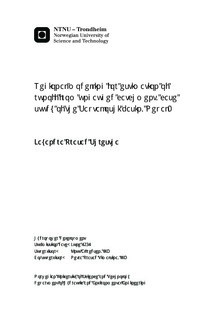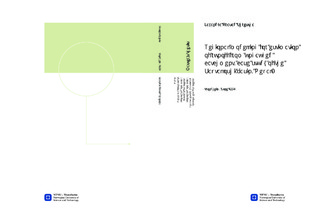| dc.contributor.advisor | Alfredsen, Knut | nb_NO |
| dc.contributor.advisor | Timalsina, Netra Prasad | nb_NO |
| dc.contributor.author | Shrestha, Jayandra Prasad | nb_NO |
| dc.date.accessioned | 2014-12-19T12:31:44Z | |
| dc.date.available | 2014-12-19T12:31:44Z | |
| dc.date.created | 2012-11-08 | nb_NO |
| dc.date.issued | 2012 | nb_NO |
| dc.identifier | 566077 | nb_NO |
| dc.identifier | ntnudaim:7598 | nb_NO |
| dc.identifier.uri | http://hdl.handle.net/11250/242227 | |
| dc.description.abstract | The accurate simulation of an ungauged basin is one of the great challenges in hydrology. In case of Nepal, most of the gauge stations are located at low level land and getting reliable hydrological data at intake sites, most of which are located at high mountains, are almost impossible. The regional model calibration attempts to make a relationship between parameters of model and characteristics of the modelling units so that the calibrated parameters can be applied to ungauged basin. The main objective of the study is to apply ENKI model system to the Saptakoshi basin and to test the reliability of the model in this area and extract the runoff at ungauged sites. The processed climatic data from 1999 to 2008 are applied to the ENKI model system, which is equipped with tools for regional model setup, for different calibration cases.In case I, all the 16 catchments are included for calibration and average Nash-Sutcliffe Efficiency R2 of -1.57 is obtained which is comparatively very low. The R2 value of Uwa Gaon basin is -27.76; the reason may be due to missing precipitation data of Tibet. Hence, this catchment is excluded for further analysis.Excluding Uwa Gaon catchment in calibration case II, the improved average R2 of 0.33 is achieved. The hydrographs of simulated runoff seem in realistic shapes and patterns. Then validation is carried out for the period from 2004 to 2008. The average R2 of the validation is equal to 0.14 which is less than calibration result. The individual R2 value of the catchments is nearly equal with calibration results except of Pachuwar Ghat basin.In case III, only 8 independent catchments are selected for calibration and rest catchments are applied for validation. The average R2 of 0.59 is achieved which is the best result among the 3 cases. The R2 is found at the range of 0.54 to 0.78 for most of the catchments. Similarly, the average R2 of validation is achieved 0.15 which is greater than calibration case II. While processing data, some errors and inconsistency in flow data were found. The results show that the R2 of independent and upstream catchments are well fitted with observed data and less with downstream basins where observed data were inconsistent. The good quality of observed data and availability of enough data governs the best simulation of the model and best value of the R2.The 30 parameter values are obtained and among these some are less sensitive to the output results which are kept constant. Finally, the obtained regional parameter sets are applied to extract the runoff data at the intake site of Tamor Hydropower project and compared with scaled data. Further improvement of simulation results can be achieved with good quality of data and thus uncertainties in parameters can be reduced. | nb_NO |
| dc.language | eng | nb_NO |
| dc.publisher | Institutt for vann- og miljøteknikk | nb_NO |
| dc.subject | ntnudaim:7598 | no_NO |
| dc.subject | MSB1 Hydropower Development | no_NO |
| dc.title | Regional modelling for estimation of runoff from ungauged catchment, case study of the Saptakoshi basin, Nepal. | nb_NO |
| dc.type | Master thesis | nb_NO |
| dc.source.pagenumber | 140 | nb_NO |
| dc.contributor.department | Norges teknisk-naturvitenskapelige universitet, Fakultet for ingeniørvitenskap og teknologi, Institutt for vann- og miljøteknikk | nb_NO |

